Ignimbrite
[Welded Tuff]
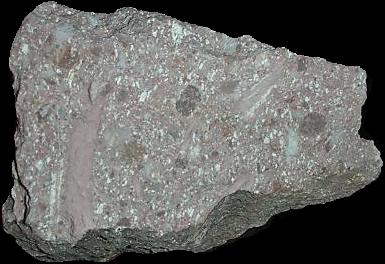
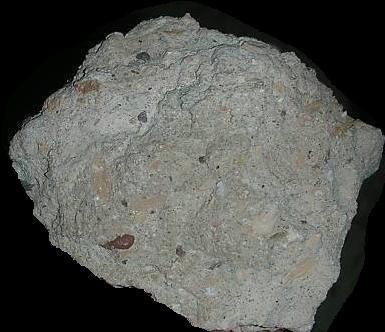
Photographed by Michael P. Klimetz
Zacatecas
MEXICO
Photographed by Michael P. Klimetz
Zacatecas
MEXICO
An ignimbrite, or welded tuff, is the deposit derived from a pyroclastic density current, or pyroclastic flow, a hot suspension of particles and gases that flows rapidly from a volcano, driven by a greater density than the surrounding atmosphere. Ignimbrites are often of dacitic or rhyolitic composition. Ignimbrites are made of a very poorly sorted mixture of volcanic ash (or tuff when lithified) and pumice lapilli, commonly with scattered lithic fragments. The ash is composed of glass shards and crystal fragments. Ignimbrites may be loose and unconsolidated, or lithified (solidified) rock called lapilli-tuff. Near source, ignimbrites commonly contain thick accumulations of lithic blocks, and distally, many show m-thick accumulations of rounded blocks (or cobbles) of pumice. The term 'ignimbrite' derives from ‘fiery rock dust cloud’ [from the Latin igni- (fire) and imbri- (rain)], and forms as the result of immense explosions of pyroclastic ash, lapilli and blocks flowing down the sides of volcanoes. Ignimbrites may be white, grey, pink, beige, brown or black depending on their composition and density. Many pale ignimbrites are dacitic or rhyolitic. Darker coloured ones may be densely welded vitrophyre (i.e. glassy) or, less commonly, mafic in composition. Ignimbrite is primarily composed of a matrix of volcanic ash (tephra) which is composed of shards and fragments of volcanic glass, pumice fragments, and crystals. The crystal fragments are commonly blown apart by the explosive eruption. Most are phenocrysts that grew in the magma, but some may be exotic crystals such as xenocrysts, derived from other magmas, igneous rocks, or from country rock. The ash matrix typically contains varying amounts of pea- to cobble-sized rock fragments called lithic inclusions. They are mostly bits of older solidified volcanic debris entrained from conduit walls or from the land surface. More rarely, clasts are cognate material from the magma chamber. If sufficiently hot when deposited, the particles in an ignimbrite may weld together, and the deposit is transformed into a 'welded ignimbrite', made of eutaxitic lapilli-tuff. When this happens, the pumice lapilli commonly flatten, and these appear on rock surfaces as dark lense-shapes, known as fiamme. Intensely welded ignimbrite may have glassy zones near the base and top, called lower and upper 'vitrophyres', but central parts are microcrystalline ('lithoidal'). The mineralogy of an ignimbrite is controlled primarily by the chemistry of the source magma. The typical range of phenocrysts in ignimbrites are biotite, quartz, sanidine or other alkali feldspar, occasionally hornblende, rarely pyroxene and in the case of phonolite tuffs, the feldspathoid minerals such as nepheline and leucite. Commonly in most felsic ignimbrites the quartz polymorphs cristobalite and tridymite are usually found within the welded tuffs and breccias. In the majority of cases, it appears that these high-temperature polymorphs of quartz occurred post-eruption as part of an autogenic post-eruptive alteration in some metastable form. Thus although tridymite and cristobalite are common minerals in ignimbrites, they may not be primary magmatic minerals. Ignimbrite originates from explosive eruptions caused by vigorous exsolution of magmatic gases. The escaping gas accelerates the magma up the conduit, resulting in fragmentation to produce pumice and ash, which dispersed in gas will flow downslope or spread where the dispersal is denser than the atmosphere, as pyroclastic density current, sometimes known as a pyroclastic flow. Ignimbrites form sheets that can cover as much as thousands of square kilometers. Some examples create thick, valley-filling deposits, while others form a landscape-mantling veneer that locally thickens in valleys and other palaeotopographic depressions. Many igimbrites are loose, unconsolidated deposits, but some exhibit welding, giving the ignimbrite the texture of a solid rock mass, hence the terms commonly used to describe these examples: welded tuff and welded ashflow. Often, but not always, a caldera will form as a result of a large ignimbrite eruption because the magma chamber underneath will drain and thus can no longer support the weight of the rock above. Ignimbrite deposits can be voluminous - examples with up to hundreds or even thousands of cubic kilometers are known from individual eruptions in the geological past
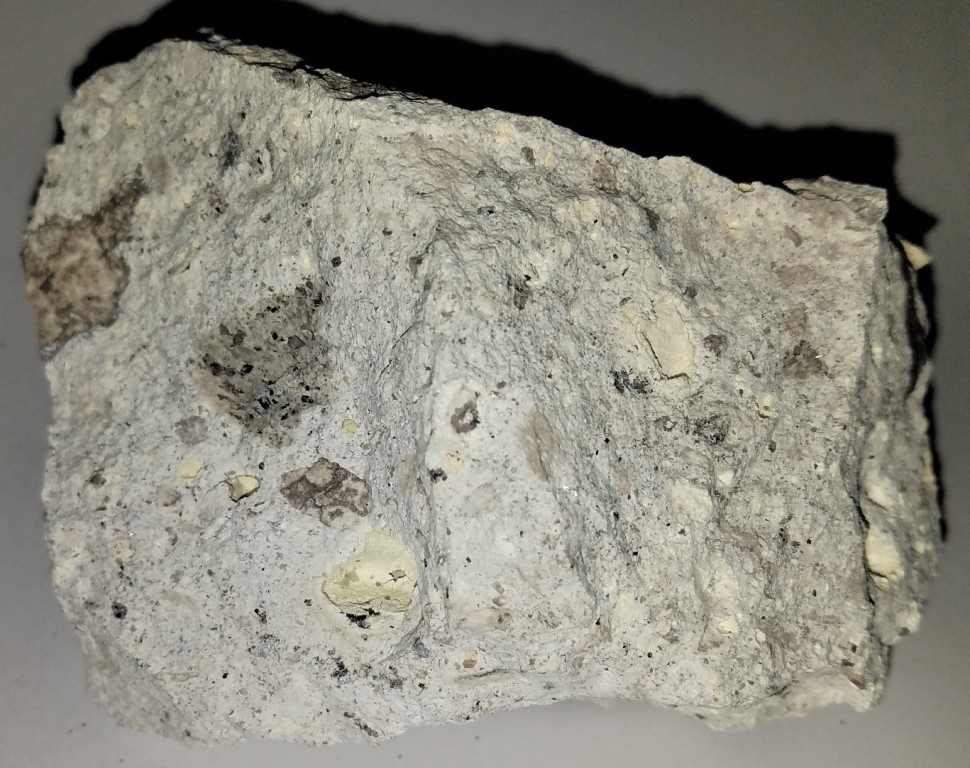
Photographed by Michael P. Klimetz
Mt. Wilson
Wilson Creek Range
Lincoln County
NEVADA

Photographed by Michael P. Klimetz
Mt. Wilson
Wilson Creek Range
Lincoln County
NEVADA
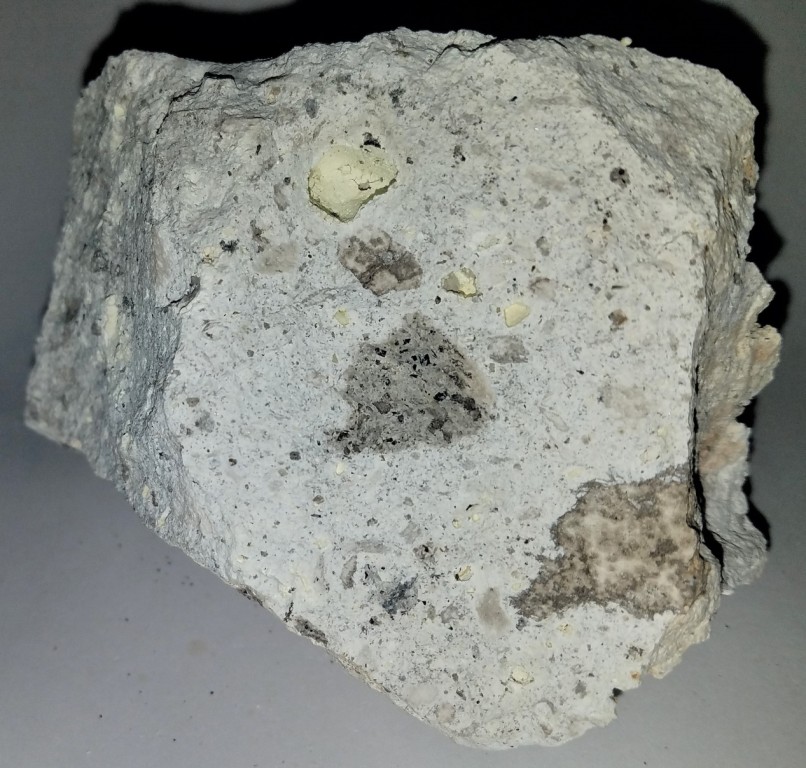
Photographed by Michael P. Klimetz
Mt. Wilson
Wilson Creek Range
Lincoln County
NEVADA
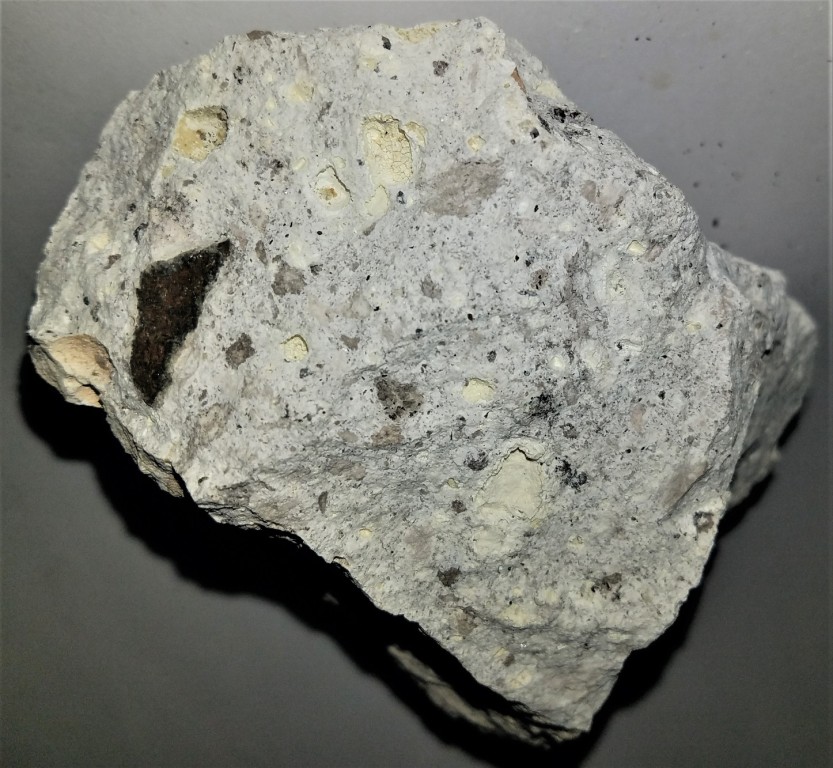
Photographed by Michael P. Klimetz
Mt. Wilson
Wilson Creek Range
Lincoln County
NEVADA